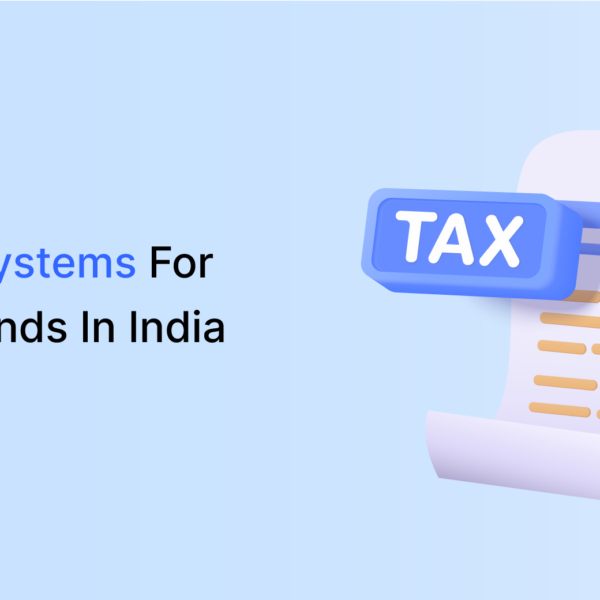Introduction
When it comes to growing your money, the choice between NPS (National Pension System) and SIP (Systematic Investment Plan) can be pivotal. The main advantages and distinctions between NPS vs SIP are examined in this blog to assist you in making an informed investing choice.
Being financially secure is quite essential for all. We often start planning for our retirement in our mid-20s and 30s.
Gone are the days when saving money meant depositing cash in our bank account or keeping bundles of cash in a locker.
Today’s millennials believe in the smart saving method that at least provides returns higher than inflation.
NPS and SIP are some of the popular investment methods the young generation chooses. However, most of us wonder which would be the best for us – Is it NPS or SIP? Let’s find out with Koshex.
NPS vs SIP – the battle between these two investment options is endless. While both provide tax benefits, choosing between them should depend on our future financial roadmap.
Let us understand these investment instruments in detail to understand which is better for us in the long run.
Systematic Investment Plan SIP
The stock market can be an attractive investment destination for many as it gives good returns. However, entering the markets without proper timing and knowledge can be risky for our financial health.
However, there is a safer option to earn market-linked returns by investing in mutual funds.
Mutual funds are investment pools professionally managed by expert fund managers. They are less risky compared to direct equity investments.
Further, we can either make lump sum investments in mutual funds or invest through the Systematic Investment Plan route. While lump sum investment involves making a one-time investment, SIP involves investing regularly over time.
Advantages of SIP
Following are some of the major benefits of investing through SIP in mutual funds:
1. Ease of investing
The biggest advantage of SIP is that it allows us to choose the amount we want to invest in. We can start with Rs 500 a month and grow our portfolio. Once we choose a mutual fund, the amount is directly debited from our bank every month.
2. Rupee cost averaging
The equity market is extremely volatile. When the markets take a dip, we get more mutual fund units at a lower NAV. When the market rises, while the units allotted may be less, the overall portfolio value increases. In the long run, our cost of investment averages. This is called rupee cost averaging.
3. Offers higher returns
Mutual funds invest in high-yielding stocks and shares, giving us higher returns. However, market volatility can also lead to higher risks. In essence, mutual fund investments fare well by providing higher returns than most other conventional investment avenues.
4. Power of compounding
The returns we receive when we invest in mutual funds for a long period are ploughed back into our account and re-invested. This is called compounding, and it can help us grow our portfolio at a magnificent pace in the long run.
5. Easy Withdrawal
Mutual funds are highly liquid and we can withdraw at any time. This option also serves as a quick emergency fund if we need liquid cash. Also, we can start a monthly withdrawal of a specific amount once we have accumulated a sizable corpus if we are looking for monthly payouts.
National Pension Scheme NPS
The Central Government introduced the National Pension Scheme to allow investors to invest for the long term. This scheme allows us to set aside a certain amount of our monthly income towards a pension account.
After maturity, we can withdraw a certain amount of our investments as a lump sum. The remaining amount should be withdrawn as a pension annuity.
The NPS s regulated by the Pension Fund Regulatory and Development Authority (PFDRA). This scheme is highly beneficial if we are looking for a steady monthly pension after retirement.
Advantages of NPS
Following are some of the key advantages of investing in NPS:
1. Low-risk profile
The rules of NPS state that a maximum of 75% can be invested in the equity market. This significantly decreases the risk profile. It is one of the important reasons for people opting for NPS.
2. Voluntary contribution
In NPS, we can set the amount that goes into the pension account. We can also decrease or increase the amount annually based on our financial situation.
3. Transparency
The details regarding our investments are guarded by the PFRDA. This ensures transparency which makes sure that everything is carried out as per the defined rules.
4. Flexible options
Under NPS, we have the power to choose from a wide range of investment options available to us. The power to build our portfolio and grow wealth is in our hands.
Also Read: National Pension Scheme (NPS) – How To Open NPS Account?
NPS vs SIP – Comparative Analysis
While we obtained a good understanding of NPS and SIP, which one is more suitable for us? Let’s have a comparative analysis to find out the same!
| Parameters | NPS | SIP |
| Returns | NPS provides returns of up to 8% to 10% per annum. | SIP in mutual funds provides returns of up to 12% to 18% per annum. |
| Tax Benefits | The amount invested in NPS can be claimed as a deduction (up to Rs. 1.50 lakhs) under Income Tax Act, 1961. Further, an added deduction of Rs. 50,000 can also be claimed. | The amount invested in Equity Linked Savings Scheme or ELSS fund SIP can be claimed as one of the deductions of the Income Tax Act, 1961 (up to Rs. 1.50 lakhs). |
| Liquidity and Lock-in Period | NPS is not a liquid investment. Withdrawal of funds is allowed at the time of superannuation or retirement. Pre-mature withdrawal can be done subject to certain conditions. | Most mutual funds are open-ended funds and therefore are highly liquid. However, if investments are made in ELSS funds for claiming a tax deduction, then a lock-in period of 3 years shall apply. |
| Risk | NPS is less risky as compared to mutual funds. | Mutual funds are riskier as compared to NPS investments. |
| Expenses | The expense ratio of NPS is among the lowest and can range between 0.15% to 0.25%. | Depends upon the type of funds. The expense ratio can range anywhere between 0.3% to 1.8%. |
| Distribution of Investments | In the case of an active choice, investors can invest a maximum of 75% investments in equity instruments. In the case of auto choice, investors do not have any control over asset allocation. | The distribution of investments depends upon the type of mutual fund selected by the investor. |
Conclusion
NPS V/s SIP – This battle may go on forever. However, we need to choose the right investment tool based on our preferences. If we are looking for a secure retirement plan and a long-term investment option, we may opt for NPS.
It may also be perfect for entrepreneurs looking for regular income after retirement. It also provides more tax benefits than a SIP in mutual funds.
On the other hand, investing in ELSS through SIP can be useful for those looking for higher returns from a short-term and long-term perspective.
For flexibility and liquidity, SIP may be the right choice for us. Koshex is an ideal investment avenue that allows investors to invest in 5000+ funds across different categories.
Further, investors can also elect to invest in smart deposits, fixed deposits, or digital gold to diversify their portfolios. For more advice on how to manage your investments and grow your portfolio, sign up with Koshex.
Frequently Asked Questions
1. What is the NPS interest rate?
The interest rate for NPS may range between 8-10% per annum.
2. What happens to my NPS if I quit my job?
If you discontinue payments to your NPS fund, you can withdraw only 20% of the deposited amount. The rest of the money will move towards the Annuity program and will be handled by the annuity service providers impanelled by the PFRDA.









Leave a Comment